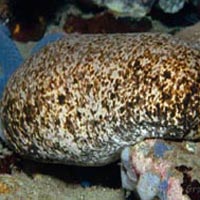GC-MS analysis and antibacterial activity of the Sea cucumber (Muelleria lecanora) extract

Accepted: August 21, 2021
All claims expressed in this article are solely those of the authors and do not necessarily represent those of their affiliated organizations, or those of the publisher, the editors and the reviewers. Any product that may be evaluated in this article or claim that may be made by its manufacturer is not guaranteed or endorsed by the publisher.
Authors
Sea cucumbers are marine invertebrates commonly found in benthic areas and deep seas. On a global scale, they have a high commercial value with an increased level of production and trade. This study aims to analyze the bioactive compound in Sea cucumber (Muelleria lecanora) using the Ultrasound-Assisted Extraction Method (UAE) and Gas Chromatography- MassSpectrometry (GC-MS). Furthermore, it identifies the antibacterial activityin microorganisms Salmonella, Escherichia coli, and Staphylococcus aureus. The bioactive compounds were extracted using methanol, acetone, and n-hexane solvent and were separated by ultrasound-assisted extraction. In the initial stage, phytochemicals were screened using Gas Chromatography-MassSpectrometry (GC-MS). Disc diffusion method was then used to determine theantibacterial activity against Salmonella, Staphylococcus aureus, and Escherichia coli. The results showed that methanol extract is more suitable for extracting bioactive compounds of Muelleria lecanora than acetone and n-hexane. Meanwhile, acetone solvents are more suitable for the production of flavonoid and steroid compounds than Mulleria lecanora samples. Heneicosane compounds that function as a new antiproliferative for inhibition of tumor and cancerous cells are produced from n-hexane. The antibacterial activity of acetone, methanol and n-hexane extract determined by diffusion assay was effective against Staphylococcus aureus and Salmonella but ineffective against Escherichia coli. GC-MS results showed that the major constituents obtained were steroid and flavanoid. From this study, Sea cucumber extract can be considered a healthy nutrientin food and pharmaceutical products.
Muhammad Yusuf currently works at the Chemical Engineering Department, Politeknik Negeri Ujung Pandang. Their project research in Food Processing, Nutraceuticals, Phytochemicals, Food Microbiology and Functional Foods.
Nur Fitriani Usdyana Attahmid currently works at the Agroindustry Department, Politeknik Pertanian Negeri Pangkep, Indonesia. Their project research in Food Processing, Nutraceuticals, Phytochemicals, Food Microbiology and Functional Foods.
How to Cite
PAGEPress has chosen to apply the Creative Commons Attribution NonCommercial 4.0 International License (CC BY-NC 4.0) to all manuscripts to be published.

 https://doi.org/10.4081/jbr.2021.9765
https://doi.org/10.4081/jbr.2021.9765



